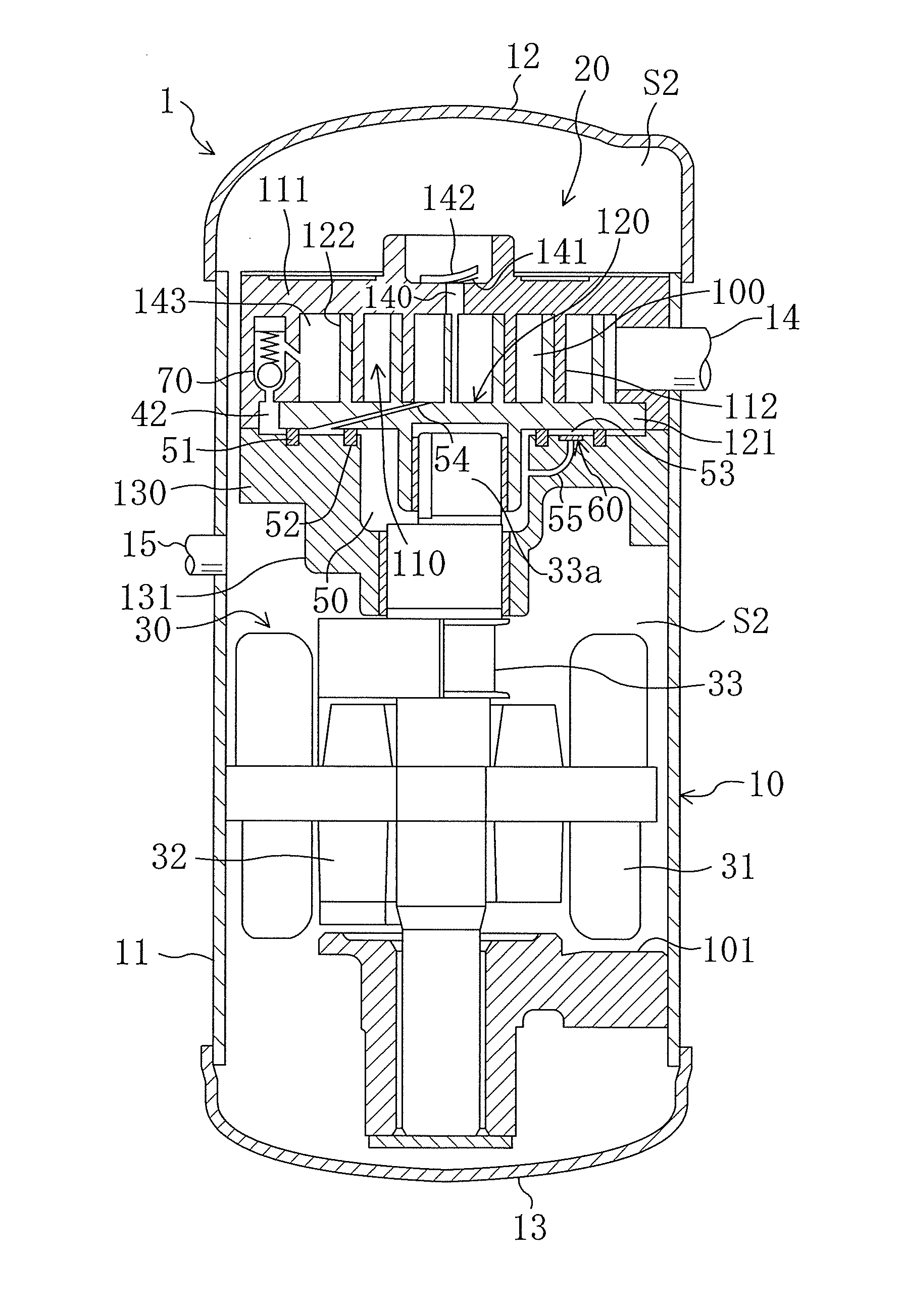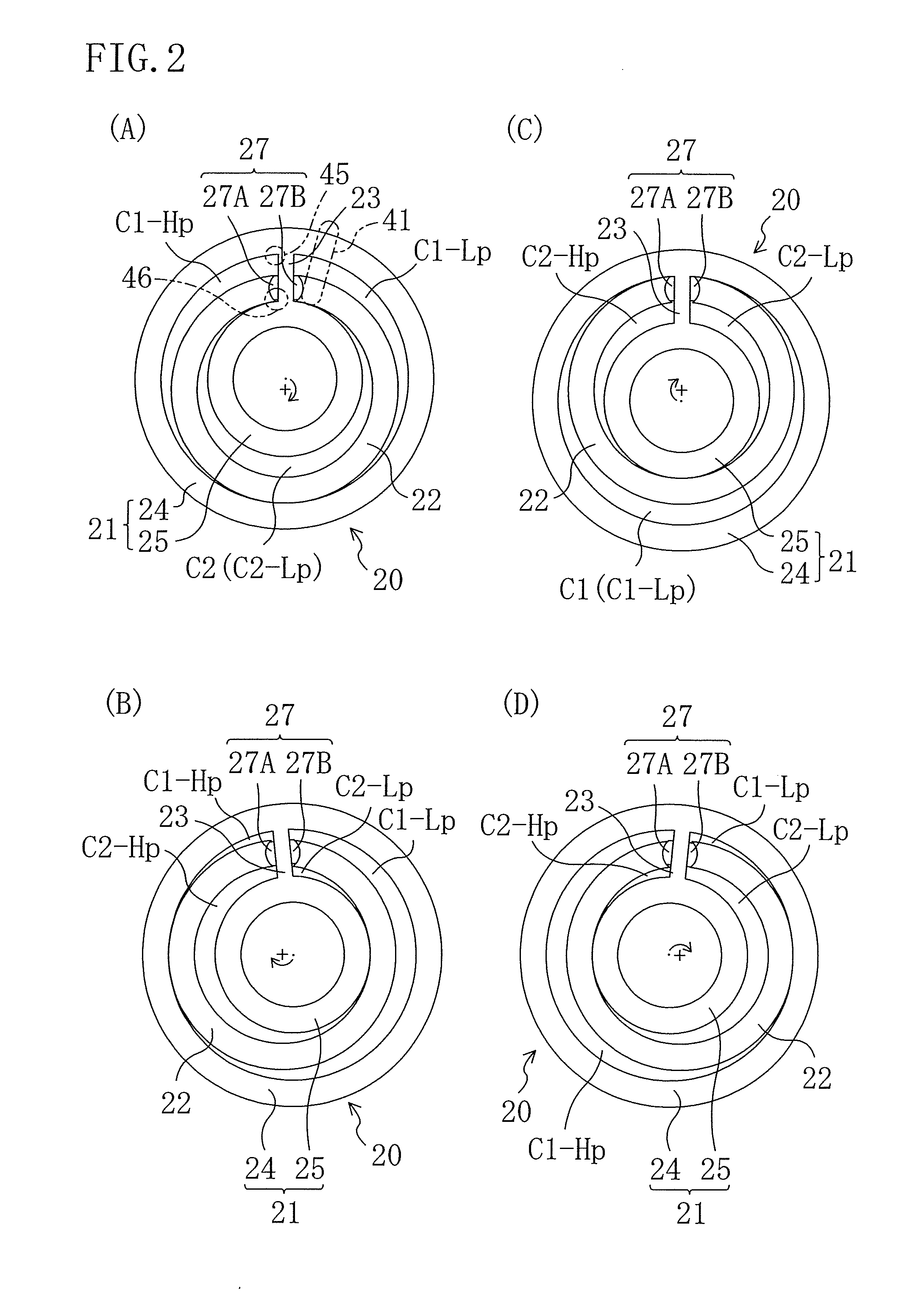Fluid machinery
- Summary
- Abstract
- Description
- Claims
- Application Information
AI Technical Summary
Benefits of technology
Problems solved by technology
Method used
Image
Examples
example embodiment 1
[0071]In the present example embodiment, a rotary compressor (1) is applied to a fluid machinery, as shown in FIG. 1. The compressor (1) is a hermetically sealed compressor. A compression mechanism (20) as a rotary mechanism including an eccentric rotary piston (22) and a motor (30) as a driving mechanism are accommodated inside a casing (10) of the compressor (1). The compressor (1) is provided in a refrigerant circuit of, for example, an air conditioner to compress refrigerant sucked from an evaporator, and discharge it to a condenser.
[0072]The casing (10) includes a cylindrical body part (11), an upper head (12) fixed at the upper end of the body part (11), and a lower head (13) fixed at the lower end of the body part (11). A suction pipe is provided at the upper head (12), while a discharge pipe (15) is provided at the body part (11).
[0073]Inside the casing (10), an upper housing (16) and a lower housing (17) included in the compression mechanism (20) are fixed. Inside the casin...
example embodiment 2
[0121]Example Embodiment 2 of the present invention will be described next in detail with reference to the drawing.
[0122]In the present example embodiment, a scroll compressor as shown in FIG. 7 is employed as the compression mechanism (20) unlike Example Embodiment 1 employing the eccentric rotation type piston mechanism. The inside space of the casing (10) of the rotary compressor (1) in the present example embodiment is defined into an upper space and a lower space by the compression mechanism (20). The upper space and the lower space communicate with each other to serve as the high pressure space (S2).
[0123]The compression mechanism (20) is a rotary mechanism in which a first cooperating member and a second cooperating member perform circulation movement in parallel and relative to each other, and includes a fixed scroll (110) as a second cooperating member, an orbiting scroll (120) as a first cooperating member, and a housing (130). The housing (130) is fixed to the casing (10)...
PUM
 Login to View More
Login to View More Abstract
Description
Claims
Application Information
 Login to View More
Login to View More - R&D
- Intellectual Property
- Life Sciences
- Materials
- Tech Scout
- Unparalleled Data Quality
- Higher Quality Content
- 60% Fewer Hallucinations
Browse by: Latest US Patents, China's latest patents, Technical Efficacy Thesaurus, Application Domain, Technology Topic, Popular Technical Reports.
© 2025 PatSnap. All rights reserved.Legal|Privacy policy|Modern Slavery Act Transparency Statement|Sitemap|About US| Contact US: help@patsnap.com



